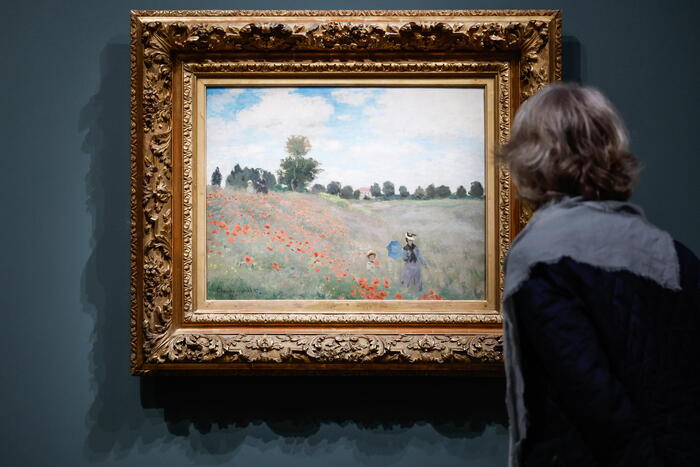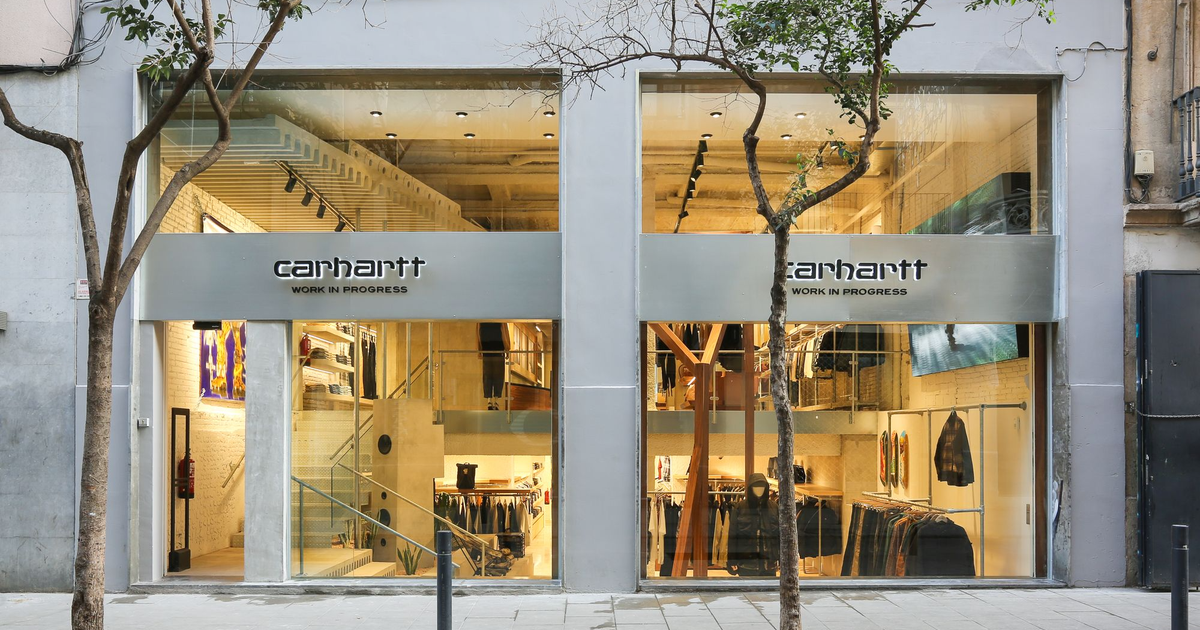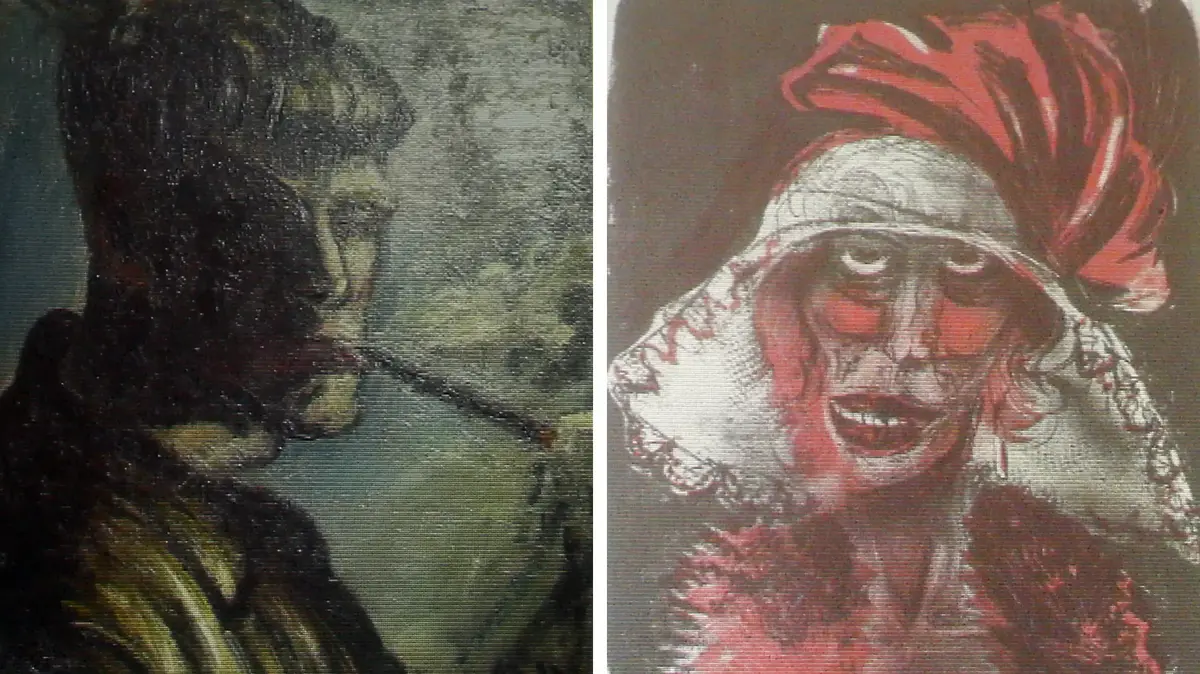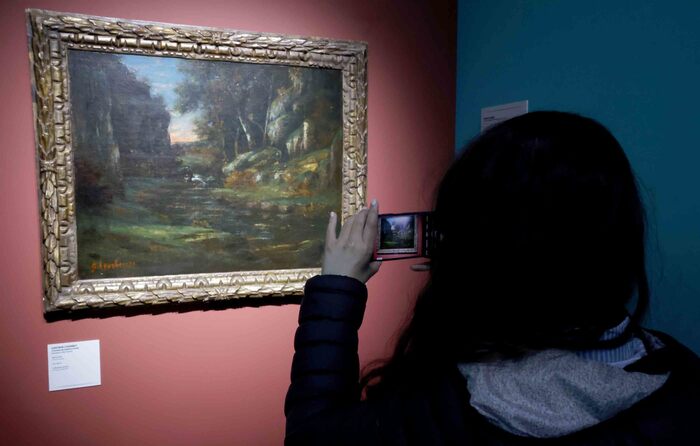'Interior with Saskia in Bed', 1640-1641, by Rembrandt Harmensz van Rijn.
Custody Foundation, Collection Frits Lugt, Paris. Custody Foundation, Paris
The Fondation Custodia may be an institution virtually unknown to the general public, but it couldn't be more in sight.
A stone's throw from the Assemblée Nationale, with the Luxor Obelisk and the Grand Palais in the background, this private collection of European drawings and graphic works from the 15th to 19th centuries — one of the most powerful in the world in private hands — behind of gems such as the works on paper section of the King of England's Royal Collection— enjoys a privileged location spread between two
hôtels particuliers
contiguous from the pre-Haussman era nestled in the heart of Paris, which not only serve as the headquarters of the institution but also as the home of its director.
These urban palaces with huge windows through which the famous light of the city pours in were purchased in 1947 by the Dutchman Frits Lugt (1884-1970) to house the thousands of works of art that he treasured throughout his life, as well as of furniture and antiques, and since then they have been expanding their activities to fulfill the vital mission of the philanthropist of contributing to the development of the History of art.
'View of the Quirinale, Rome' circa 1856-1859, by Edgar Degas.
Custody Foundation, Collection Frits Lugt, Paris.
Currently, the foundation has approximately 7,000 drawings, 15,000 engravings, 450 paintings and 55,000 autograph letters, most of them by Dutch and Flemish artists, but also French, Italian, German... and the occasional Spanish example, from Goya to Sorolla.
From the original collection of Lugt — lover and specialist in Rembrandt, of whom he amassed 21 pieces and of whom the foundation preserves two of the seven letters of his that exist — they have been adding acquisitions that are financed, as well as all their expenses, including the salaries of its 25 employees, with the "small fortune" bequeathed by the couple made up of the collector and his wife, Jacoba Lugt-Klever, a wealthy heiress.
One of the growth paths of the collection is marked by the recent addition of some 500 oil sketches, many done outdoors,
that offer "a panorama of this technique from approximately 1780 to 1880, before impressionism", as explained by Hans Buijs, curator and provisional director of the institution after the sudden death of Ger Luijten in December 2022, who will be replaced when the board that governs the foundation reach an agreement.
While many of these sketches hang on the walls of the rooms of the mansions, in whose rooms the employees work, the drawings must be protected from light for conservation reasons.
Unlike the vast majority of institutions, which keep them in boxes, here they are kept in the traditional way: between the pages of original leather albums (themselves works of art), which are piled on the shelves of various rooms. whose doors are protected with bars.
Although the Fondation Custodia can boast of owning some flashy works —not just its
rembrandts
but also pieces by masters such as Bruegel, Rubens, Watteau or Ingres, as well as a preparatory drawing by Leonardo that resists reattributions—, the spirit of the Lugt collection has more to do with the vocation of broadening the perspectives through the promotion of the work of not so well-known artists, also represented in their less studied periods.
“He really liked simple motifs,” says Buijs, pointing to some works with idealized landscapes outlined in just a few strokes.
The temporary exhibitions they organize move along the same lines.
Currently, and until May 14, they have two open: one with drawings of decorative arts objects from the Rijksmuseum collection (
Créer. Dessiner por les artes décoratifs 1500-1900
) and another with Dutch works on paper from the 18th century —much less known than the 17th century— which are preserved in the Royal Museums of Fine Arts in Brussels (Cabinet
de dessins néerlandais. Le XVIII siécle
).
“Being a private foundation, we don't have the pressure to schedule spectacular exhibitions,” boasts Buijs, who boasts of the foundation's continuous journey of works, which are constantly on loan to institutions around the world, “so we can contribute to spread less famous artists”.
The revival of the Dutch Golden Age painter Jacobus Vrel
The big bet of the exhibition this year will come in June, when they will present a complete retrospective of the work of Jacobus Vrel (c. 1630-c. 1680), an obscure painter from the rediscovered Dutch Golden Age of whom there is hardly any record from a few brushstrokes of his biography, and who has been cataloged as the “precursor of Vermeer”.
(A magnificent work of his,
Interior with a woman seated by the hearth
, is part of the Carmen Thyssen collection).
Currently on display at the Mauritshuis in The Hague, Vrel —as the curator of the exhibition, Cécile Tainturier, abounds— shares with the master from Delft (currently the protagonist of one of the most anticipated and acclaimed exhibitions in years, open until the 4th of June at the Rijksmuseum in Amsterdam) a taste for enigmatic environments and intimate and silent scenes.
Carried out by ordinary characters, his paintings display some unusual traits in the art of the time, such as the representation of practically empty spaces and the use of numerous different signatures to identify his work.
With figures from behind who observe something on the other side of doors and windows, or who cover their faces in interior retrospection, Vrel's art, as Tainturier intuits,
'Woman at the Window, Looking at a Girl', circa 1655, by Jacobus Vrel.
Fondation Custody, Collection Frits Lugt, Paris. Pascal Faligot
In addition to offering its works on loan and opening its art history library to the public, one of the most important in France, as well as promoting publications, another of the Fundation's fundamental missions consists in creating a database on line of collector's marks, that is, the stamps with initials or other designs that collectors stamp on the verso (or sometimes the recto) of drawings and prints to identify them as part of their collection.
Frits Lugt was the first to document these marks, and today the online database accumulates some 9,000 entries, to which another 3,000 marks pending study and digitization will be added.
"It is the reference database in the world," says Peter Fuhring, scientific adviser working on this project.
In this way, historians
Subscribe to continue reading
Read without limits
Keep reading
I'm already a subscriber









